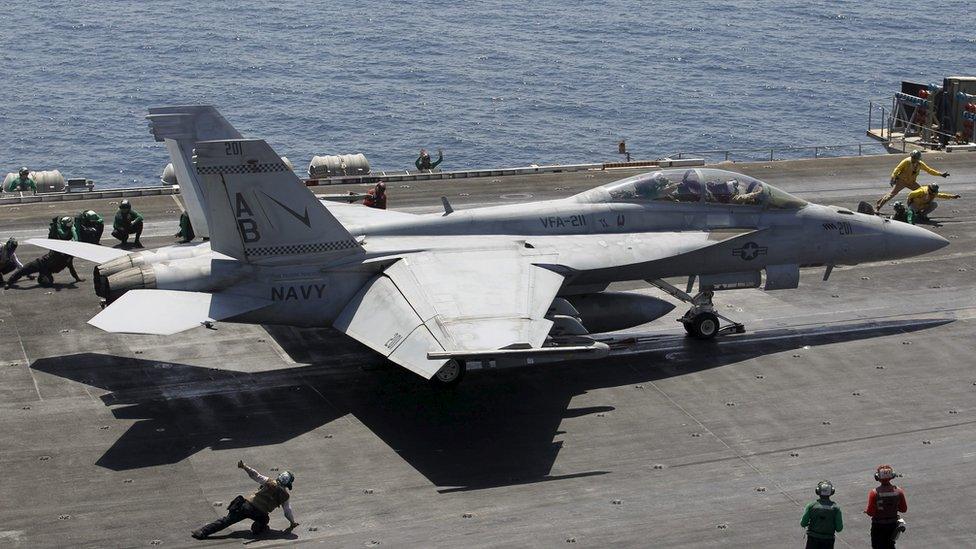Syria air strikes: What are 'embedded' military personnel?
- Published

F-16 fighter jets have been deployed to Iraq
UK pilots embedded with coalition forces have conducted air strikes in Syria against the Islamic State group, it has emerged.
This is despite MPs rejecting, in August 2013, proposals to conduct military action against Syrian President Bashar al-Assad's government in Syria.
So what are embedded troops and how does the programme work?

UK military personnel have been embedded within forces of other nations for more than 60 years, the Ministry of Defence (MoD) says.
Agreements are in place with allies, including the US, Canada, France, and Australia.
The programme is long-standing and has been used by successive governments, the spokesman said, with foreign personnel also serving within UK forces.
Exchanges are planned as part of the programme, rather than as requests for extra people.
'Lethal force'
UK personnel have operated under US command as embeds since the 1950s, including, most recently, operations in Afghanistan, Libya and Iraq.
In Libya, the MoD has confirmed that UK personnel within a US unit flew unmanned Predator drones during Operation Ellamy in 2011.
In both Iraq and Afghanistan, it has been confirmed that embedded RAF personnel flew UK-operated Reaper drones, using "lethal force" in both countries.
Elsewhere, three UK military personnel were last year in Djibouti, east Africa, within a US headquarters providing planning and supporting US military operations in the region, it was confirmed.
British forces have also recently played a role in a French operation in the Central African Republic, in 2011, and with Australian forces in East Timor, in 1999.
Under whose control?
Embedded personnel essentially operate under the mandate of the foreign force they are within, a MoD spokesman said.
As embedded military personnel within a US headquarters in Djibouti, the UK contingent came under "the command and control of the US armed forces", defence minister Mark Francois told Parliament last year, external.
But they also remained "subject to UK law, policy and military jurisdiction", he added.

The RAF began strikes against IS targets in Iraq last September
In 2006 - when discussing the issue - Lord Drayson, then Parliamentary Under-Secretary for defence procurement, said all UK-embedded forces "remain subject to UK law and service law".
Sir Michael Graydon, former Chief of Air Staff, said the concept of embedding troops with allies' forces had been going on "very successfully" for decades.
He said embedded pilots become "integral parts" of foreign forces.
"You train, you learn how to fly the airplane and you become an integral part of the squadron," he said.
Drone strikes
However, there have been occasions when the programme has prompted debate.
During the Vietnam War, UK personnel were ordered not to fly missions over the country, Sir Michael said.
And a recent report, external said the government needed to do more to explain what safeguards are in place to ensure that embedded personnel comply with international humanitarian law.
The report - by the Birmingham Policy Commission - focussed on the use of drones by UK personnel, saying assurances "should be obtained that their use is in accordance with UK legal guidelines".
The report noted that there was "no evidence" to suggest UK military - including embedded personnel with the US Air Force - had used drones against anyone other than combatants.
- Published17 July 2015
